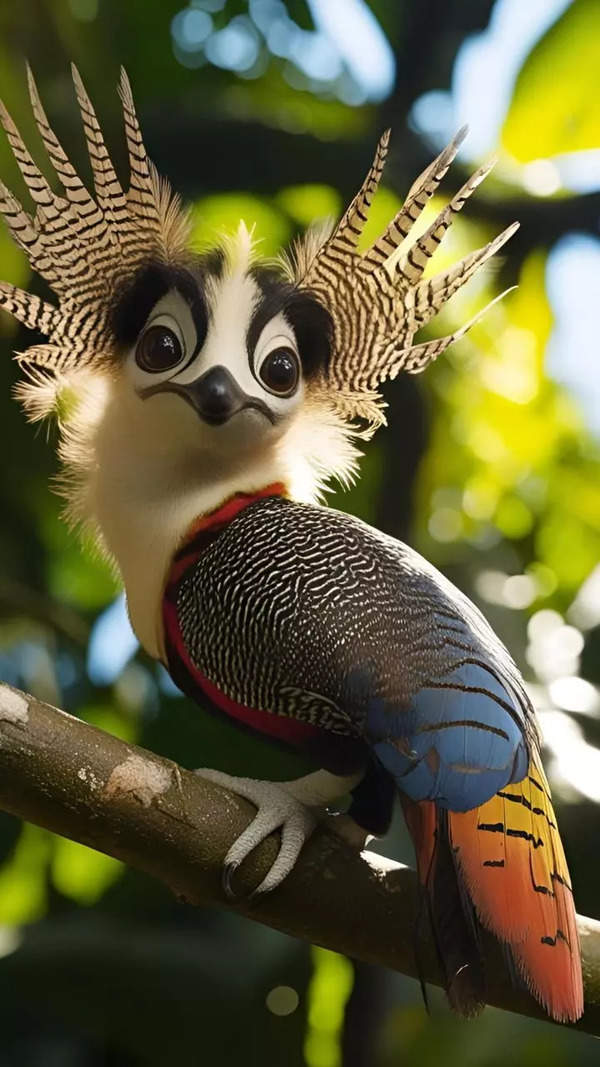- News
- India News
- Times Evoke News
- ‘Like millets, baobab trees travelled from Africa to India — and even to Australia’
Trending
This story is from June 24, 2023
‘Like millets, baobab trees travelled from Africa to India — and even to Australia’
Haripriya Rangan teaches geography and environmental sciences at the University of Melbourne. She tells Times Evoke about how plants have traversed the world:
Human history, encompassing the way we live, what we consider our culture and what we eat, is bound up with vegetation which creates landscapes around us. From the oldest times, Earth has seen the movement of plants, animals and insects over vast areas, creating ecosystems as they settled. Scientists studying ancient pollen deposits found plants which originated in one place travelled to the other end of the world. Sometimes, these were carried by winds or seas. At other times, they were transported by animals, birds — and people.
From the European colonial period, especially after the Americas were discovered, unusual and profitable plants intrigued explorers. They began transporting plants to Europe, first as curiosities which were planted in the gardens of kings, queens and nobles. Then, they developed plants with commercial value, which drove the modern movement of flora across Earth. But plants had been on the move even before. Sorghum and pearl millets came to India from Africa some 3,500 years ago. Interestingly, they travelled in a time of widespread aridification — there was a lot of movement of people then because of climatic changes. Archaeological evidence shows that as civilisations shifted, so did their plants. Later, traders and explorers brought chillies and tomatoes to India which, like millets, got assimilated into the Indian landscape and diet.

WHEN ROOTS SPREAD: Africa’s iconic baobab tree moved to India and Australia from ancient times, driven by climatic changes, planetary movements and people. Picture courtesy: iStock
The baobab tree is another intriguing — and well-travelled — plant. Originating in Africa, it is found today in the Kutch and Kathiawar peninsula, Goa, Malwa and the south central Deccan plateau in Andhra Pradesh. Rulers played a key role in influencing its travel plans — the king of Mandu employed soldiers from East Africa who carried baobab pods as a lightweight source of protein and vitamins. Similarly, Hyderabad’s rulers employed African cavalry and there are still baobabs standing where their military settlements were located, representing the movement of militias from Ethiopia, Zanzibar, Tanzania, Mozambique, etc. , to India.
The baobab even travelled to Australia. How it got there is a fascinating question. Despite Australia being much larger than Madagascar, which has six species of baobabs, the tree has only one relative, the boab, in the Kimberly region of northwest Australia. Jack Pettigrew, a geneticist, argued the plant was carried by people as they spread out of Africa, taking the southern route past the Indian subcontinent across southeast Asia into northern Australia, where it became restricted to the Kimberly. Our research explored whether there was variation across the baobab’s natural range in Australia. The Kimberly has distinct biological barriers that drove the evolution of mammals like rock wallabies. If the baobabs had been spread by animals or water, there could have been similar patterns among them. However, we found a lot of gene flow but very little variation among baobabs in the Kimberly. This indicated that in fact, humans had carried baobab seeds.
That could have occurred around the Ice Age when the Australian continental shelf extended much further out. Boabs would have existed on the exposed portion of the shelf, used by indigenous groups. When this era ended 21,000 years, sea levels rose — those trees would have been destroyed by flooding while, driven inland by rising waters, Aboriginal groups would have moved into central and eastern Kimberly, carrying boab pods with them. As the trees spread, so did the words for them. We found linguists who were studying how terms for the baobab had been shared and borrowed across Aboriginal languages — working together, we found a broad matching between the words and the gene flow of the tree. This again reflected human agency with Aboriginal people carrying the seeds and cultivating it.

FREQUENT FLYER: The tomato travelled far with sailors, soldiers and merchants. Picture courtesy: iStock
Such journeys by plants shows how our ancestors were always on the move. They also carried certain seeds and crops which they tried to plant in new places. Some did well and spread. People were always experimenting with plants — today too, many adaptations are taking place. About 20 years ago, eating millets or brown rice wasn’t mainstream. Today, so many people eat quinoa that South Americans, for whom quinoa is an everyday staple, often find it all exported. Changes in crop patterns are driven partly by evolving tastes and partly by resilience to altering climatic factors. Plants which prove to be the hardiest travel the farthest across the globe. They often carry humanity’s oldest — and newest — stories with them.

Stay updated with the latest India news, weather forecast for major cities like Delhi, Mumbai, Noida, and Bengaluru on Times of India.
End of Article
FOLLOW US ON SOCIAL MEDIA









